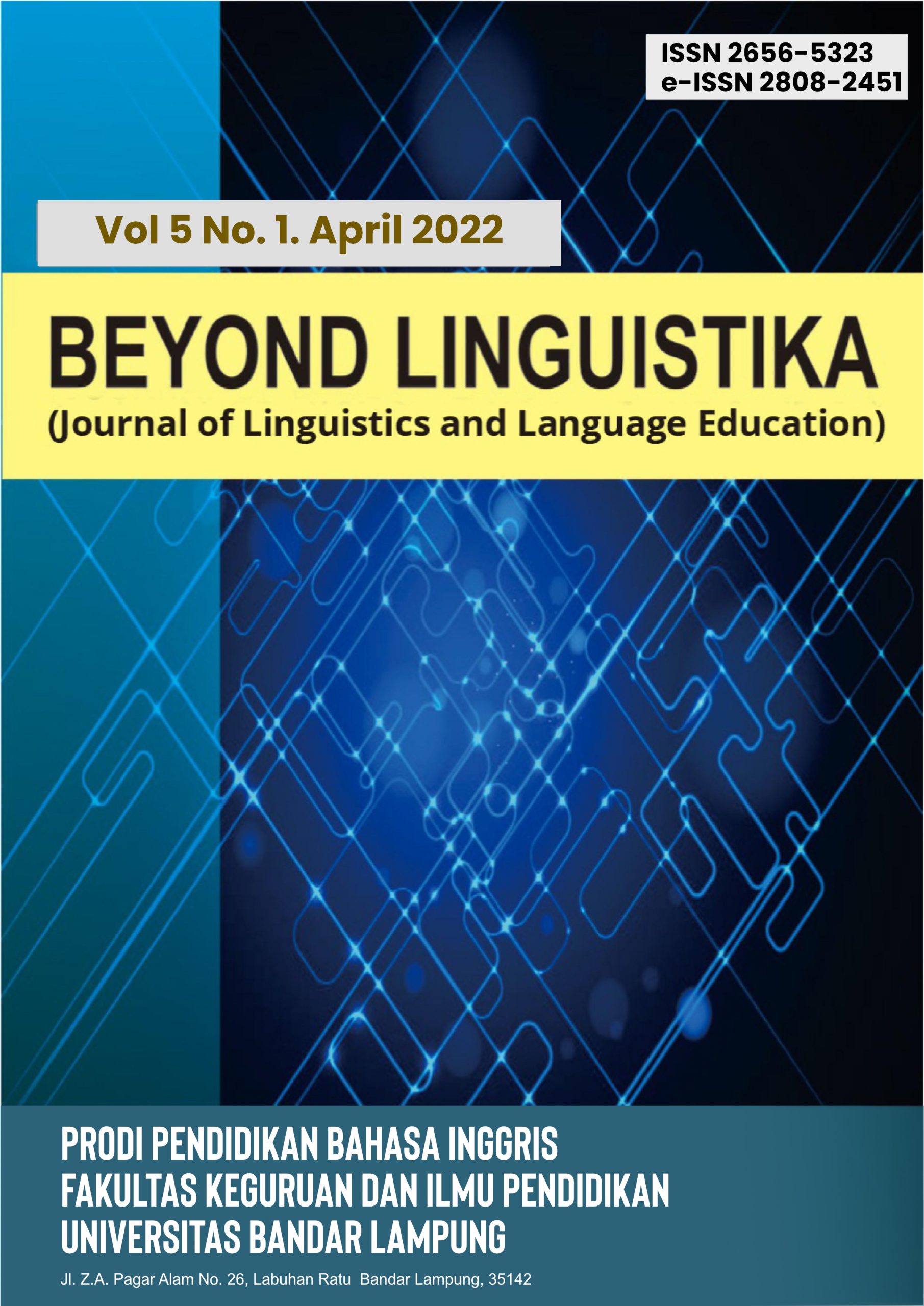DEPICTING STEREOTYPICAL REPRESENTATION OF FEMALE CHARACTER IN ANTON CHEKHOV'S LADY WITH THE DOG'
Abstract
Writers reside in particular time and place would portray their surrounding socio-cultural context through their literary works. Yet, they may also use their works to articulate their concerns and critics upon particular socio-cultural practices. Literary works then is ideological. Utilizing Critical Discourse Analysis as the approach and Transitivity as the analytical tool, this study then focuses on uncovering representation of female character in a selected short story by Anton Chekhov. Representation here is perceived as discursive practice in which patriarchy is considered to be the working ideology. The results show that female character is represented stereotypically and gender-biased in what she does, what she says, what she thinks and what she feels. The result also suggests that the practice of dual representation and ambivalence is also evident in female character representation.
Keywords
Full Text:
PDFReferences
Althusser, L. (2014). On the Reproduction of Capitalism: Ideology and Ideological State Apparatus (translated by G.M Goshgarian). New York: Verso.
Atkins, T.W. and Murphy, K. (1993) Reflection: a review of the literature. Journal of Advanced Nursing, 18, 1188-92.
Bressler, C. (1998). Literary Criticism: an Introduction to Theory and Practice. Upper Saddle River, N.J: Prentice Hall.
Bressler, C. (1999). Literary Criticism. United State of America: Prentice- Hall International.
Eagleton, T. (2003). Literary Theory: An Introduction, 2nd Ed. Minneapolis: The University of Minnesota Press.
Eriyanto. (2001). Analisis Wacana: Pengantar Analisis Teks Media. Yogyakarta: LKiS Group.
Fowler, R. (1991). Language in the News, Discourse, and Ideology in the Press. London: Routledge and Kegan Paul
Fairclough, N. (2003). Analyzing Discourse: Textual Analysis for Social Research. New York: Routledge.
Fiske, J. (1990). Introduction to Communication Studies, 2nd Edition. New York: Routledge.
Goatly, A. (2000). Critical Reading and Writing: An Introductory Course Book. New York: Routledge.
Hall, S. (1997) Representation: Cultural Representation and Signifying Practices. London: Sage.
Halliday, M.A.K. (1994). An Introduction to Functional Grammar, 2nd Edition. London: Edward Arnold.
Halliday, M.A.K. and Matthiessen, Christian M.I.K. (2004). An Introduction to Functional Grammar, 3rd Edition. London: Hodder Education.
Kolodny, Annete (1980). Dancing through the Minefield: Some Observations on the Theory, Practice, and Politics of a Feminist Literary Criticism. Feminist Studies, 6 (Spring: 15).
Millet, Kate. (1970). Sexual Politics. Brighton-Sussex: The Harvester Press Limited.
Ruth, Sheila. (1995). Issues in Feminism: An Introduction to Women’s Studies. California: Mayfield Publication Company.
Simpson, P. (2000). Language, Ideology, and Point of View. New York: Routledge.
Spivak, Gayatri (1988a). In Other Worlds: Essays in Cultural Politics. New York: Routledge.
Spivak, Gayatri (1982). The Politics of Interpretation. Critical Inquiry 9 (1):259-278.
Puurtinen, T. (1998). Syntax, Readability and Ideology in Children's Literature. Meta, 43(4), 524–533. https://doi.org/10.7202/003879ar.
Van Leeuwen, T. (1996). The representation of social actors in Carmen Rosa Caldas-Coulthard and Malcolm Coulthard, Text and Practices. London: Routledge.
DOI: http://dx.doi.org/10.36448/bl.v1i1.1346
Refbacks
- There are currently no refbacks.















